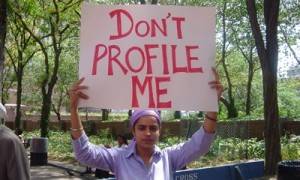
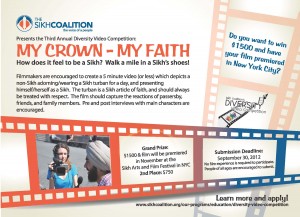 The use of social video sites by our community has seen an upward trend. Of course, many readers of this blog will instantly recognize individuals that have emerged in the last two to three years using YouTube and other social media sites – Mandeep Sethi, Humble the Poet, JusReign, and IISuperwomanII are but a few of the commonly recognized names from North America alone.
The use of social video sites by our community has seen an upward trend. Of course, many readers of this blog will instantly recognize individuals that have emerged in the last two to three years using YouTube and other social media sites – Mandeep Sethi, Humble the Poet, JusReign, and IISuperwomanII are but a few of the commonly recognized names from North America alone.
As it becomes more accessible, we are also seeing the emergence of more grassroots-level use of social video. This medium has allowed Sikhs, and particularly Sikh youth, to express themselves to an unprecedented audience size, and there are several organizations encouraging Sikhs to make use of this platform. For example, SikhNet has been running their Youth Online Film Festival since 2006, and the Sikh Coalition is also holding their third annual Diversity Video Competition for its third consecutive year.
Recently, Manbeena Kaur, the Sikh Coalition’s Education Director, was good enough to answer some questions about the use of social video for the purposes of Sikh education and awareness.
Guest blogged by Preeti Kaur
The following is an excerpt from Preeti Kaur’s poem “Letters Home,” in honor of those lost and injured in Oak Creek, WI. Read the full poem here, and sign the petition to push the FBI to track hate crimes against Sikhs.
i travel the 5th udaasi
i see no stranger in this country
when i was born my mother carried me
to richmond hill new york gurdwara to discover the first
letter of my name
as grown woman i perch above
pacific watch from el sobrante, california gurdwara
as fog rolls under golden
gate’s spine at sunset
i recite rehraas toward an angel island
100 year udaasi and i have traveled the whole country
hyphen is a language i lost
when the door to the Guru arrived
as asteroid from amritsar to stockton
Mian Mir put down the first brick
in the americas too
walt whitman spoke to 10 Nanaks
left his four directioned
pairs of shoes outside stockton’s darbar
shoes for us to borrow
in oak creek Bhai Taru Singh Ji’s scalp
lives again an eternal hair
which grows from 1907 bellingham
tied into the topknot of wisconsin
our kanga combs this hair with media soundbites
hair which absorbs perfume of flags
a mane we sometimes fear to wash
lakhi shah vanjara, mehar karo
give us your brave flame today
make our roof known as only nirbhao nirvair
hot winds blow away
with 5th Nanak’s naam we alight
this fire beneath us the first shaheed
a heat which ignites miri piri
for when they come for us
again

Ricky Gill is the son of Sikh parents and is running to represent California’s 9th Congressional District (photo: Ricky Gill campaign website)
I have written several times in the past about Ranjit “Ricky” Gill, the Republican Party candidate for Congress in California’s 9th Congressional District. Gill is challenging Democratic Party incumbent Jerry McNerney for the seat.
Gill, 25, is the son of Sikh physicians in the Stockton, California area. Much of the donations to his campaign have come from the Sikh community, as well as interests in the healthcare and agricultural industries. The northern California constituency for which Gill is contesting is an area that has a sizable Sikh population and is, in fact, home to the first and oldest Gurdwara in the United States (the Gurdwara is celebrating its 100-year anniversary this year).
There have been a variety of questions about Gill’s candidacy, particularly based on his age and lack of experience, and claims that he is downplaying his party affiliation (indeed, the fact that he is running as a Republican is not immediately transparent on his campaign website).
In April, I wrote about the emerging perception that Ricky Gill was also distancing himself from his Sikh background:
Much like South Carolina Governor Nikki Haley did when she ran for the Governor’s seat, Gill is reportedly distancing himself from his Sikh heritage in his campaign and emphasizing a Christian background. As Haley endorsed Gill late last year, perhaps it should not be a surprise that he is following her playbook, but it is nonetheless disappointing that a Sikh American is choosing to obscure his own background for the sake of an election.
Shortly afterwards, I contacted Gill’s campaign to offer the opportunity to address this issue. I did not receive a response.
Fast forward to today, Gill’s minimal response to the attack at the Oak Creek, Wisconsin Gurdwara has reinforced the belief that Gill is dissociating himself from his religious background.
 During this past week following the tragic events in Wisconsin, our community has changed substantially. We have grown as a people and identified even more with Sikhi, standing up in a time of crisis, and responding in a positive and effective way, battling apathy with activism and suffering with solidarity.
During this past week following the tragic events in Wisconsin, our community has changed substantially. We have grown as a people and identified even more with Sikhi, standing up in a time of crisis, and responding in a positive and effective way, battling apathy with activism and suffering with solidarity.
SALDEF’s SikhLEAD Leadership Development Program will ensure that our youth remain engaged with the issues that continue to affect our community today and will provide them with the tools they need to enact real change. Although it may be a dark time for many of us, it is now more than ever that we need leaders and young activists leading the struggle against oppression. It is now more than ever that we need the younger generation to step up to the podium and speak out and act against injustice. It’s not enough to feel for our Sikh brothers and sisters anymore. The time is now for the youth to rise up and become leaders, especially in the wake of the Wisconsin shooting tragedy.
The Leadership Development Program brings together approximately 15 young Sikh American leaders from across the country to participate in six days of training spread over Columbus Day and Memorial Day weekends. Attendees will participate in a series of workshops aimed to challenge, inspire and support a group of intelligent and motivated Sikh leaders. The purpose of the program is to empower the Sikh American youth to be confident, aware and resourceful individuals, equipped with all the tools they need to fulfill both their personal potential but also that of the Sikh American community. For more details please visit www.sikhlead.org.
Let us take on the Guru’s seva together and become the pioneers of our own future, a future that has no place for events such as the Wisconsin shootings. The deadline to apply for the SikhLEAD LDP has been extended until August 19, 2012 at 11:59 EST.
Needless to say, it’s been a tough week. I have been grateful for all the thoughtful writing my Sikh brothers and sisters have been putting out through the mainstream and independent media and all the important conversations that have been happening here at TLH and beyond.
That being said, sometimes it’s nice to take a few minutes away from the intense discussion and laugh a little. As Naunihal Singh noted in his recent (fantastic) column in the New Yorker, neither John Stewart nor Steven Colbert have made any mention of Oak Creek at all since the tragedy. Fortunately, there is a new, edgy late night talk show on FX called Totally Biased, hosted by comedian W. Kamau Bell and produced by Chris Rock, that did go there. And in a respectful way. No surprise, given that fellow desi Brooklynite Hari Kondabolu (who has a master’s degree in human rights from the London School of Economics) is a writer for the show. In this clip, Bell exposes the absurdity of some of the discussions in the mass media (and by politicians) about Oak Creek and the Sikh community. Hope you enjoy it. And I look forward to what Totally Biased has in store moving forward. (Also check out this clip from the same show about the NYPD’s stop & frisk policy).

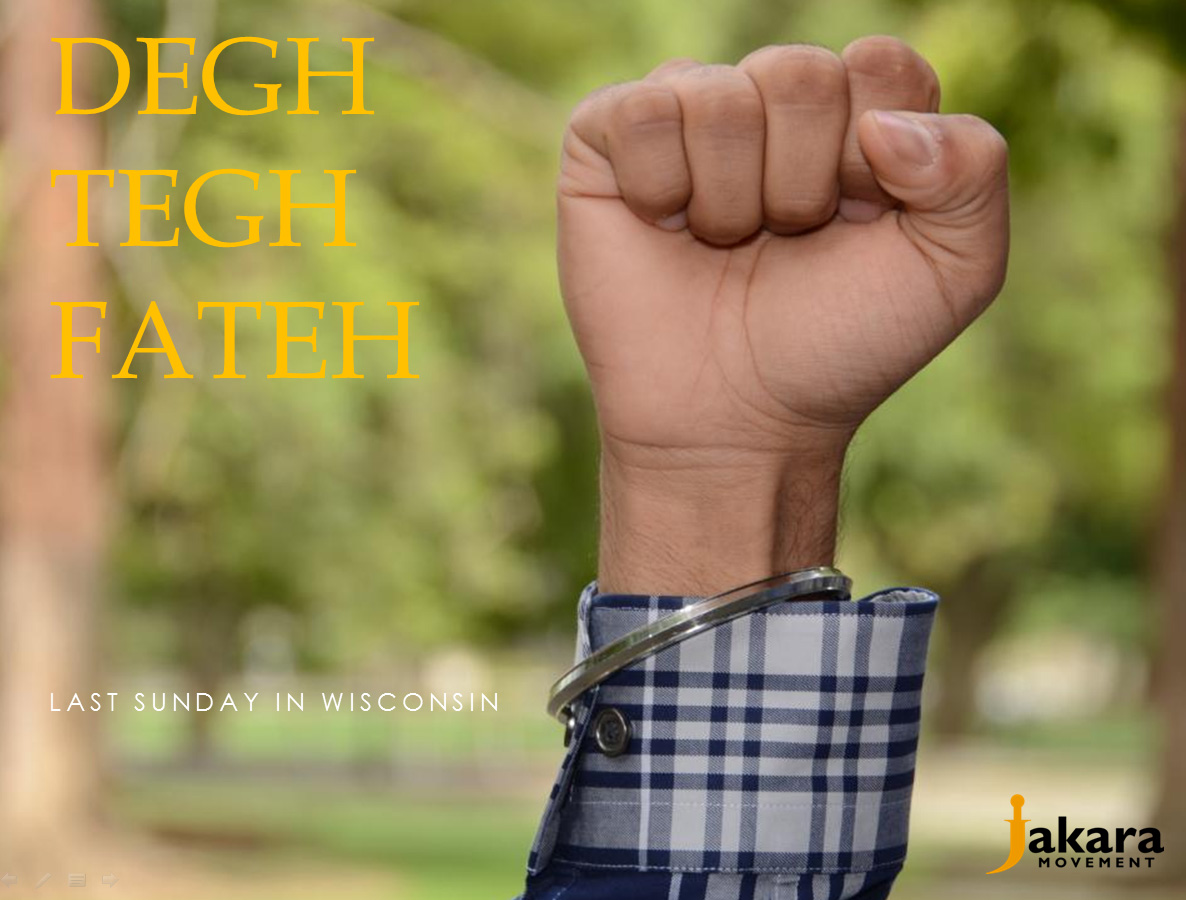 The news is still a shock. The question of “why” has been one that I have heard most often. Followed by “what next?”
The news is still a shock. The question of “why” has been one that I have heard most often. Followed by “what next?”
It is this second question that most interests me, as well.
The responses have been varied.
There are some that have called out that we are all American Sikhs, although most within the community would be a bit confused as most of us use the title “Sikh-Americans”, while the term “American Sikhs” is generally used for those sections in our community that often were first introduced to Sikhi by the late Yogi Bhajan.
There are others that are taking on the task to ‘teach’ others about Sikhi and raise talking points, when speaking to the media – either national or even regional. SALDEF and Sikh Coalition have been at the forefront and have even produced Sikhi 101-type materials that can be used when speaking to non-Sikh audiences. Both should be commended for their work.
Still far more interesting to me – and is often the case within The Langar Hall – is how Sikhs dialogue with each other. While still important – in some ways it seems a bit less significant how Sikhs speak to non-Sikhs, when compared to how we speak to one another. National attention will wane; the media will become bored; yet, we will still be there with one another. Two recent postings – one published on this very blog – largely speak to this very question.
Guest blogged by Santbir Singh
 We are not strangers to random acts of violence and discrimination. Although mass shootings have become far too common in America in recent years, rarely have these horrific crimes been targeted at one community. Today, that changed. Our beautiful gifts, our kesh and dastars, have become easy targets for the ignorant and angry. Since 9/11 that discrimination has only increased. However, with the exception of the senseless killing of Balbir Singh Sodhi, these attacks have never been so deadly. Now Sikh Americans are left confused and uncertain of how to respond.
We are not strangers to random acts of violence and discrimination. Although mass shootings have become far too common in America in recent years, rarely have these horrific crimes been targeted at one community. Today, that changed. Our beautiful gifts, our kesh and dastars, have become easy targets for the ignorant and angry. Since 9/11 that discrimination has only increased. However, with the exception of the senseless killing of Balbir Singh Sodhi, these attacks have never been so deadly. Now Sikh Americans are left confused and uncertain of how to respond.
Our first priority must be the survivors and their friends and family. We are a generous community that is admirable in our response to tragedies. Seva is really nothing more than an act of love, a demonstration of recognizing the spark of the divine in others. Just as Guru Nanak sought to serve those in need wherever he traveled, we must reach out to our sisters and brothers in Oak Creek and demonstrate our support for them in every way conceivable. Whether this means monetary assistance, providing people on the ground, or offering support and understanding for the psychological trauma the Sangat of Oak Creek have suffered, a tragedy such as this provides us a unique opportunity to demonstrate our strength as a community.
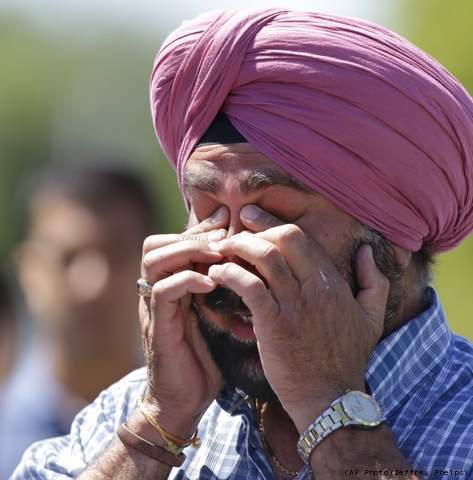 Over the past 12 hours #templeshooting has been covering the twittersphere. It is a reference to the tragedy that occurred early this morning in Oak Creek, Wisconsin, where a gunman entered a Gurdwara during Sunday divan and killed six sangat members, wounding many more. Sikhs around the country reacted almost immediately to this event – posting updates on Facebook and Twitter, speaking to news outlets, filling in gaps of misinfomation, supporting Sikh organizations who have been working diligently with local officials and government agencies and community members who started up a fund for the families of the victims. While this has been an incredibly traumatic experience for the Sikh American community, we are inspired by the actions of the police officer who came to the aid of the sangat members – potentially preventing a larger massacre. We are comforted by the support of our friends and colleagues who have reached out to the Sikh community offering their solidarity.
Over the past 12 hours #templeshooting has been covering the twittersphere. It is a reference to the tragedy that occurred early this morning in Oak Creek, Wisconsin, where a gunman entered a Gurdwara during Sunday divan and killed six sangat members, wounding many more. Sikhs around the country reacted almost immediately to this event – posting updates on Facebook and Twitter, speaking to news outlets, filling in gaps of misinfomation, supporting Sikh organizations who have been working diligently with local officials and government agencies and community members who started up a fund for the families of the victims. While this has been an incredibly traumatic experience for the Sikh American community, we are inspired by the actions of the police officer who came to the aid of the sangat members – potentially preventing a larger massacre. We are comforted by the support of our friends and colleagues who have reached out to the Sikh community offering their solidarity.
Here we have started a running list of articles, resources and community gatherings. We hope this will be a way for you to learn about the events and about ways for you to stay engaged.
Sikh comedians like Jus Reign have been gaining popularity through YouTube and social media sites for the last several years. I love being at gatherings of extended family when my little cousins show me the latest viral video, which often is hilarious. Even when it’s not, I find myself wondering what it would have been like to grow up as a Sikh in the diaspora in times like these. While we are still by and large not represented at all in the mainstream media, young Sikhs now create our own media, and many do so with much success. Sometimes the videos are brilliant, and perhaps sometimes they get hits simply because Sikhs in the diaspora, especially young Sikhs, are thirsty for the latest quirky, bizarre, or silly video put out by other Sikhs.
To end this hot and humid summer week in NYC, I thought I’d share this video that has been circulating lately, a trailer for what appears to be a series called “Sikhs in the City,” brought to us by Laughistan. There are some familiar faces in there including Sikh Coalition co-founder Amardeep Singh. I’m eager to see what their series will bring us in the future. Enjoy!
Guest blogged by ResistSingh
 Every June and November, Sikhs in Canada (and globally) are curious to see what Canadian politicians will say about the tragedies of 1984.
Every June and November, Sikhs in Canada (and globally) are curious to see what Canadian politicians will say about the tragedies of 1984.
Will they align themselves with the community and provide support and solidarity with the Sikhs as they come together to remember both the invasion and massacre of innocents inside the Darbar Sahib complex during the hot month of June; and then the senseless targeting, butchering, killing and raping of Sikhs during the November Sikh Genocide?
Although the answer is a no brainer to human rights activists, like many social justice issues they seem to be tough political decisions that attract countless discussions and debates amongst politicians and political parties about vote banks, international cooperation, trade relations, development, foreign policy and much more. That is why we have seen sporadic statements from the Liberals and Conservatives for November, rarely if ever for June and a lack of consistency.
Guest blogged by ResistSingh

As the month of June has passed, Canadian Sikhs, along with human rights activists and their allies, are recovering from yet another campaign of misinformation by the Indian High Commission and a recent wave of visceral and unfounded attacks.
Twenty-eight years after the Indian Army Invasion of the Darbar Sahib Complex during Massacre Bluestar, the Government of India has continued its assault by attempting to deny Canadian citizens an opportunity to engage in the healing and reconciliation process as they deal with the wounds inflicted upon them during the invasion.
With the recent attempts by the Government of India to undermine unity and reconciliation in the Diaspora amongst all South Asians in Canada, it has given rise to some serious questions one must consider: how and why is India interfering in the lives of Canadian citizens and their democracy?; is there any substance to the claims they are making?
While conducting an analysis of India’s response to the Leader of the NDP, Tom Mulcair’s statement of solidarity with the Sikh community, a basic review of the Indian High Commissions claims has shown many nuances and problematic statements have been made, lacking independent validation. Additionally, beyond the factually incorrect statements that have been identified, the language of the Indian High Commissioner has unfortunately been mirrored by members of Canada’s unelected, patronage-appointed Senate.
Of particular concern, a published article by Conservative Senator Asha Seth titled “Building walls, spreading hate” contains many sentences that resemble those in a letter written by the Indian High Commissioner, along with claims that are simply, factually incorrect.
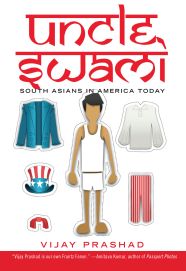
Co-blogged by Jodha and Mewa.
See introduction here.
In order to give some format to this, I’ll attempt to summarize major points of each chapter and then conclude the post with a bit of my own thoughts, analysis, questions, and/or comments. Looking forward to your comments and thoughts! We’ll see how it goes for this first time and can revisit the format, if need be.
Chapter 1 – Letter to Uncle Swami
Professor Vijay Prasad opens his Uncle Swami with a provoking letter to the Uncle. Uncle Swami may be the same as Uncle Sam or there may be some differences too. Prasad takes stock of the past 10 years since the “planes crashed into your buildings.”
Written in an anti-imperialist vein, he writes “planes crash; people are smashed.” The effects of that fateful September day were not limited to New York or Washington, to those nearly 3,000 people that died, or even their families. No, Prasad writes “your feet stomped on your own ground, crushing Balbir Singh Sodhi and Gurcharanjeet Singh Anand, Imran Tahir and Ahmed Abualeinen.” Nor were these feet only stomping on “your own ground” – they stomped “far-off Kabul and Kandahar, Mazar-e-Sharif, and Herat, later Baghdad and Basra.”
But that “obedient servant” knows that Uncle Swami isn’t just stomping feet and whipping tails, he acknowledges “You have been good to me. You have been good to many of us.” Still he suffers – “I have heartburn, Uncle. I will take to drink. I will take to drugs. I will take to watching TV, eating fast food, going into debt.”
Contradictions and all – this is Uncle Swami.
My last post on the issue of Building Begampura: Confronting Caste raised much concerns and a host of opinions. I am personally committed to raise the voice against apartheid, discrimination, and humiliation that continues to occur in our community due to caste.
Since my last post, jathedar Gurbachan Singh and others have spoken out against the issue of caste-based Gurdwaras. While naming of the Gurdwaras is problematic and may be an important move, much more important is to criticize and shake-up the casteism that led many of these “historically-discriminated” groups to move in this direction after facing abuse at the hands of the “privileged” groups. To deny the context and believe that the root is merely ‘naming’ is on one level merely ‘lip-service’ and on other hand is to take a position against the already-victimized groups. It is not ‘naming’ that is the problem – it’s the casteism, stupid.
Again, while the voice of jathedar Gurbachan Singh and others may be notable, as we have seen with hukamnamas against sex-selective abortion, in and of themselves they will not stop the deeper issues. What is needed are social movements by civic groups. One such initiative is the Pledge Begampura initiative by the Jakara Movement. Read the shabad; learn about the issue; and take the pledge!
Also critical is the growing discussion around the subject in Punjab. Day and Night Television had a recent forum on the subject of caste-based Gurdwaras (pagh salute Pukhraj Singh!). Denial of casteism is not the solution. As the recent issue of the inhumane abuses and attempt to create wage slaves by the landlords of village Mahan Singh Wala, the issue of caste is pertinent and tears at the social fabric of Punjab. Change will come; I hope Sikhs reading this will embrace that change and challenge the inhumanity of casteism.
Aamir Khan’s social sensation “Satyamev Jayate” has highlighted the issue of casteism on a national level. See the episode here.

Below the fold, I have linked a few more recent media discussions on the topic.
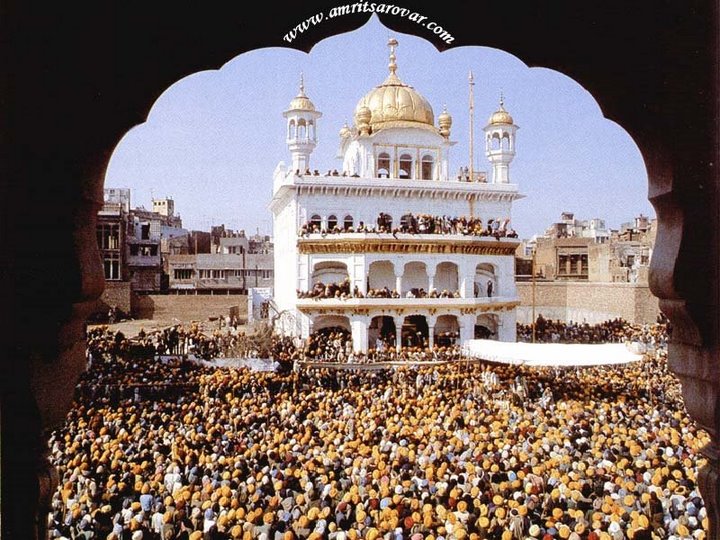 Guestblogged by Harinder Singh
Guestblogged by Harinder Singh
Harinder Singh is a co-founder of the Sikh Research Institute and the Panjab Digital Library. He is interested in anything Sikhi, esp. institutional development towards community building. His Twitter handle is @1Force.
I heard as recently as last Sunday at a Baltimore gurduara, that Sikhs don’t know how to make their own decisions. True, and false.
For more than a century (1699-1805), Sikhs made tough, controversial, politically incorrect, yet reached consensus-driven, time-sensitive, and decisive conclusions via the institutions of the Sarbat Khalsa and the Gurmata. And this was accomplished during a century that saw half of Sikh population killed in a single genocidal campaign.
It has taken more than 200 years to dismantle these systems of consensus building; it will take a concerted effort for at least 20 years to revive it. This process will require complete openness and inclusivity. It is a risk worth taking and a solemn opportunity to grasp what others deemed worth dying for!
Sikhs worldwide responded to the recent Rajoana phenomenon with stunning solidarity. Governments, politicians, and spiritualists weren’t sure what was going on. Musicians used the opportunity to wash-off their “sins” of sycophancy from the last Panjab election promos. People-at-large were excited, but they were not prepared. I felt personally that I failed to convince myself of what matters most, and I failed to convince the activists (both the Tweeting and sloganeering kinds) to do something meaningful in any concerted way. I concluded that we self-deluded panthak folks failed everyday-Sikhs at this historical moment with an engagement policy. There was no mechanism to decide what the Panth must do at the crucial tipping point of actionable potential.
By now, you have surely been inundated with Facebook posts and discussions expressing excitement, amazement, or maybe skepticism about French designer Jean Paul Gaultier’s recent showcase of (non-Sikh) models wearing colorful “Sikh-style” turbans.
Gaultier has a thing for India, it seems. According to a recent news article, “The designer is known to visit the country quite often and owns a vast library of intensely coloured textile swatches here since his first visit to Kolkata in West Bengal and Puri in Orissa, in the 1970s.” In a recent interview, Gaultier said, “In every collection I have done, there is always an Indian inspiration.”

Over the last couple of weeks, I’ve been fascinated by the buzz about the turbaned models in Sikh circles and have been trying to figure out exactly how I feel about it and if I have anything useful to contribute to the conversation. I can’t promise this will be useful, but here are some thoughts and questions that have been swirling around in my head lately.
We Sikh men are not used to being seen as attractive or desirable through the lens of mass media. In Bollywood we are buffoons, in Hollywood we are nonexistent, save the English Patient and the occasional shoutout Waris Ahluwalia gets in the press. So yes, there is something amazing about seeing these models rocking turbans like they are the hottest accessories imaginable, when we, for so long, have received little to no positive reinforcement from the mainstream.
 It has been nearly four years since we last attempted this. Back then, we attempted TLH’s very first book club, by examining Gurharpal Singh’s and Darshan Singh Tatla’s Sikhs in Britain: The Making of a Community. This round we are suggesting Vijay Prasad’s Uncle Swami.
It has been nearly four years since we last attempted this. Back then, we attempted TLH’s very first book club, by examining Gurharpal Singh’s and Darshan Singh Tatla’s Sikhs in Britain: The Making of a Community. This round we are suggesting Vijay Prasad’s Uncle Swami.
Although the book is aimed at issues centered around South Asian American experiences, it may be useful and enlightening to see how well they fit, shape, and interest Sikh-American experiences.
The Book:
From the jacket:
Within hours of the attacks on the World Trade Center, misdirected assaults on Sikhs and other South Asians flared in communities across the nation, serving as harbingers of a more suspicious, less discerning, and increasingly fearful worldview that would drastically change ideas of belonging and acceptance in America.
Weaving together distinct strands of recent South Asian immigration to the United States, Uncle Swami creates a richly textured discussion of a diverse and dynamic people whose identities are all too often lumped together, glossed over, or simply misunderstood. Continuing the conversation sparked by his celebrated work The Karma of Brown Folk, Prashad confronts the experience of migration across an expanse of generations and class divisions, from the birth of political activism among second-generation immigrants and the meteoric rise of South Asian American politicians in Republican circles to migrant workers, who are at the mercy of the vicissitudes of the American free market.
A powerful new indictment of cultural and racial politics in America at the dawn of the twenty-first century, Uncle Swami restores a diasporic community to its full-fledged complexity, beyond both model minorities and the specters of terrorism.
The Author:
For those interested in issues related to South Asian Americans, Professor Vijay Prasad needs little introduction. The author of The Karma of Brown Folks has been one of the foremost thinkers and scholars on the subject of identity politics and identity formation of South Asians in the Unitd States.
There has been plenty of criticism of his politics, book, and writings. All of these are pertinent and can allow for a more nuanced discussion. Still his voice is important and calls out for discussion.
The Format:
- Part 1 (Monday, 7/16) – Chapter 1 (Letter to Uncle Swami) and Chapter 2 (The Day Our Probation Ended)
- Part 2 (Monday, 7/23) – Chapter 3 (The India Lobby) and Chapter 4 (How Hindus Became Jews)
- Part 3 (Monday, 7/30) – Chapter 5 (Compulsions of Ethnicity) and Chapter 6 (The Honeycomb Comes Apart)
What to do from here:
- Order the book ASAP. Don’t delay as we are going to begin in one week.
- Invite others and help us spread the word!
- If you are going to participate, leave a short introduction here in the comment section and let us know that you plan to take part.
- Be ready in 1 week!
Living in Brooklyn, New York City as a turban-wearing Sikh, I attract plenty of negative attention from random strangers as well as the cops, which I’ve written about at length. Fortunately, I also get some love and respect from time to time as I walk or ride my bike in my neighborhood in central Brooklyn — especially from Rastafarian men who don uncut dreadlocks, often wrapped up not so differently than the gol pagh I wear, albeit usually much taller.
cops, which I’ve written about at length. Fortunately, I also get some love and respect from time to time as I walk or ride my bike in my neighborhood in central Brooklyn — especially from Rastafarian men who don uncut dreadlocks, often wrapped up not so differently than the gol pagh I wear, albeit usually much taller.
I don’t mean to make broad generalizations about a whole community, but it is worth mentioning that nearly every time I cross paths with a man who appears to be Rastafarian, without fail I get a shout out. “Respect, brother,” or “Blessings, brother,” usually accompanied by a hand or fist on his heart. Living in a neighborhood with a large Caribbean population, I encounter this regularly (and reciprocate), which is a breath of fresh air in my day-to-day life, which involves no shortage of street harassment, dirty looks, and sometimes worse. I’m grateful for this genuine, simple act of human connection and solidarity.
I’ve talked to friends about this phenomenon as well as my brother who has had similar interactions with Rastafarians in Atlanta, GA where he lives. The consensus is that the connection might stem from a recognition of a mutual prioritizing of our spirituality, and in particular, our shared spiritual connection to our hair. Indeed, Rastafarians believe in keeping hair in its natural state, and many wrap up and cover their dreadlocks. Without overstating any similarities between two very different spiritual traditions, our shared commitment to keeping our hair (not to mention a shared commitment in fighting for justice) is striking.
Our respective commitments to our hair have been similarly met with discrimination— discrimination that threatens our right to practice our religions or express our identities freely, based on racist notions of what a “professional” hairstyle is.
Last year the Jakara Movement held the first ever Bhujangi Youth Academy camp, aimed at young “at-risk” Sikh males, ages 13-17. It was a HUGE success. You can see the previous description and reflections write-up from last year.
This year the camp is happening again.
WHEN: July 15-24, 2012
WHERE: Camp Sierra (central California)
HOW TO REGISTER: Visit www.bhujangi.org
WHO TO CALL: For more information, call 1-408-905-7454 (English and Punjabi)
There will be fun activities such as paintballing, horseback riding, and sports. There will also be classes to instill a sense of pride in our collective Sikh past, but also an opportunity for reflection, emotional growth, and anger management.
The Jakara Movement is willing to work with all families of any means. As the deadline is soon approaching, we need your help and encouragement. Recommend a family member or talk to a friend if they have a young son, nephew, cousin, or brother that may be able to benefit from such an experience.
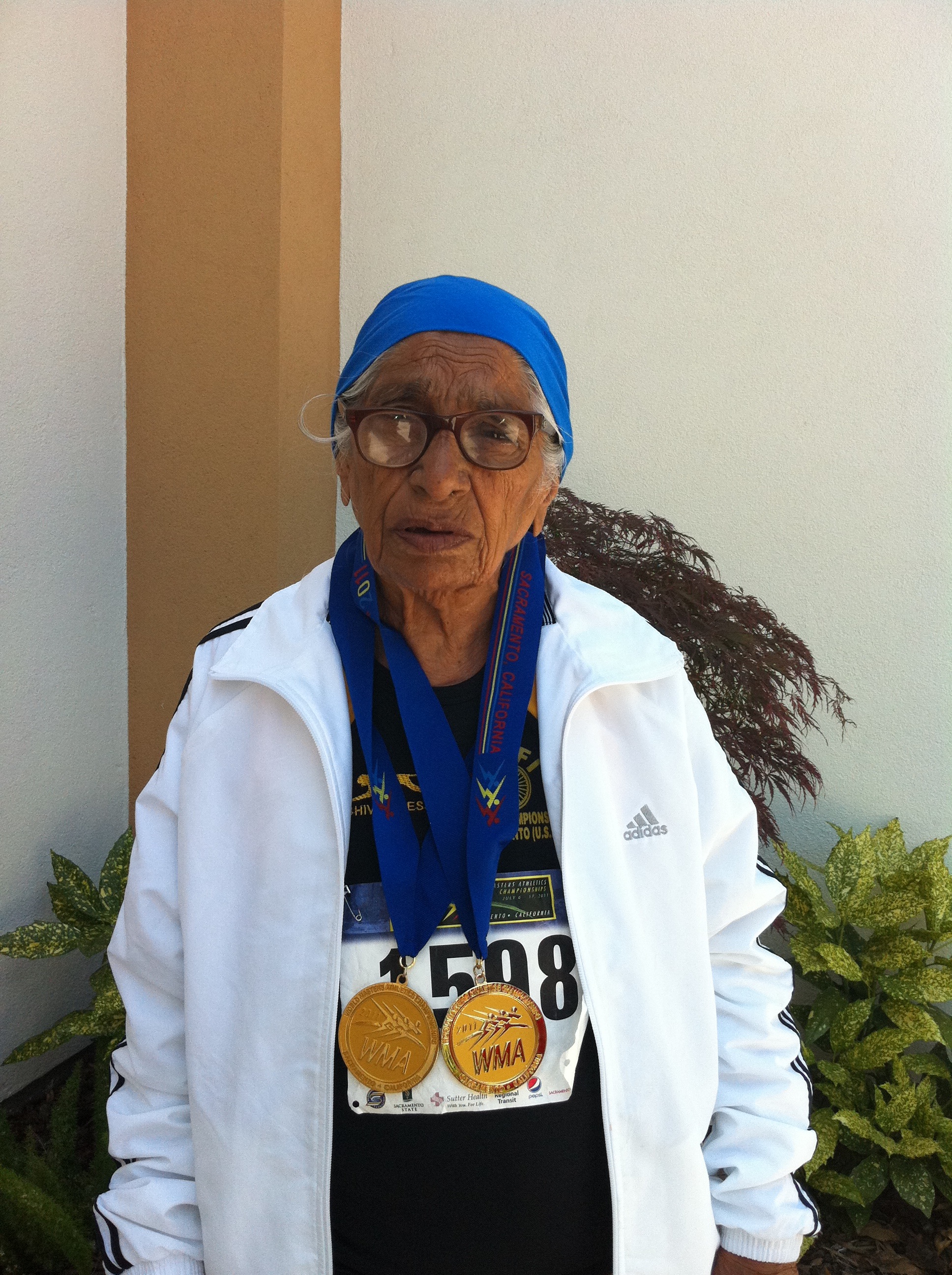 Olympic season will soon be upon us. This year the Games will be held in London. Hopefully we’ll be able to feature biographies on a number of our Sikh athletes that will be competing.
Olympic season will soon be upon us. This year the Games will be held in London. Hopefully we’ll be able to feature biographies on a number of our Sikh athletes that will be competing.
While Fauja Singh has become a celebrity in our community, he is not alone.
Man Kaur, aged 95, of Chandigarh took up running under the encouragement of her son, 72-year-old Gurdev Singh. Last year in Sacramento she received two gold medals in the 90+ age group in the 100m and 200m events. While not a marathoner, it is still an amazing achievement by an amazing woman.
“My son introduced me to athletics. I was hesitant at first, when the idea of stepping into the competitive. arena was thrown at me. But now, running has become a part of my life,” said Mann Kaur, who donned the track pants for the first time in her life last month during the 32nd national masters meet. She won a gold in both the 100m and 200m races in the 90+ age category.
Some have even argued that track and field athletics is one of the purest forms of sport, because it tests speed, strength, power and endurance. What ‘s more, athletic competition is so obviously and easily quantifiable – after all, the tape measure and the photofinish camera don’t lie. However to run the 100M and 200M at the age of 95 requires more than ‘merely’ great natural physical ability. Athletes at this age need a systematic and highly effective training programme carefully crafted to achieve physical ability to run a 200M race.
In a recent exchange with her grandson, he shared his inspiration for physical fitness coming from the example set by the Gurus. He sent the note:
Let us start living in Begumpura Sehar and enjoy Guru’s grace. This is meant to encourage youngsters.
Enjoy some more pictures and articles on Man Kaur below the fold.
My Facebook news feed and email inbox have been buzzing with discussion and calls to action to challenge racial profiling and, in particular, the NYPD’s infamous “stop and frisk” policy. I was happy to receive multiple emails today on the issue from Sikh American civil rights organizations, namely SALDEF and the Sikh Coalition. I’ve previously written about my own experiences with racial/religious profiling in NYC and the importance for us Sikhs to make the connection between the profiling we face post-9/11 and the profiling young black and Latinos have been enduring for decades.
Encouraging the NY Sikh community to attend a massive silent march this Sunday (father’s day, not coincidentally), the Sikh Coalition’s email alert stated:
In the post 9/11 era, Sikhs know all too well the consequences of racial profiling. We have felt the violence of profiling at airports; it is humiliating. It is a violation of our civil rights and it severely undermines our liberty and our safety.
As Sikhs, we have an obligation to stand for the human rights of all people. It is important that we uphold this sacred commitment as African American and Latino communities endure the type of unfair scrutiny that leads to hate crimes, workplace discrimination, school bullying, and profiling.
